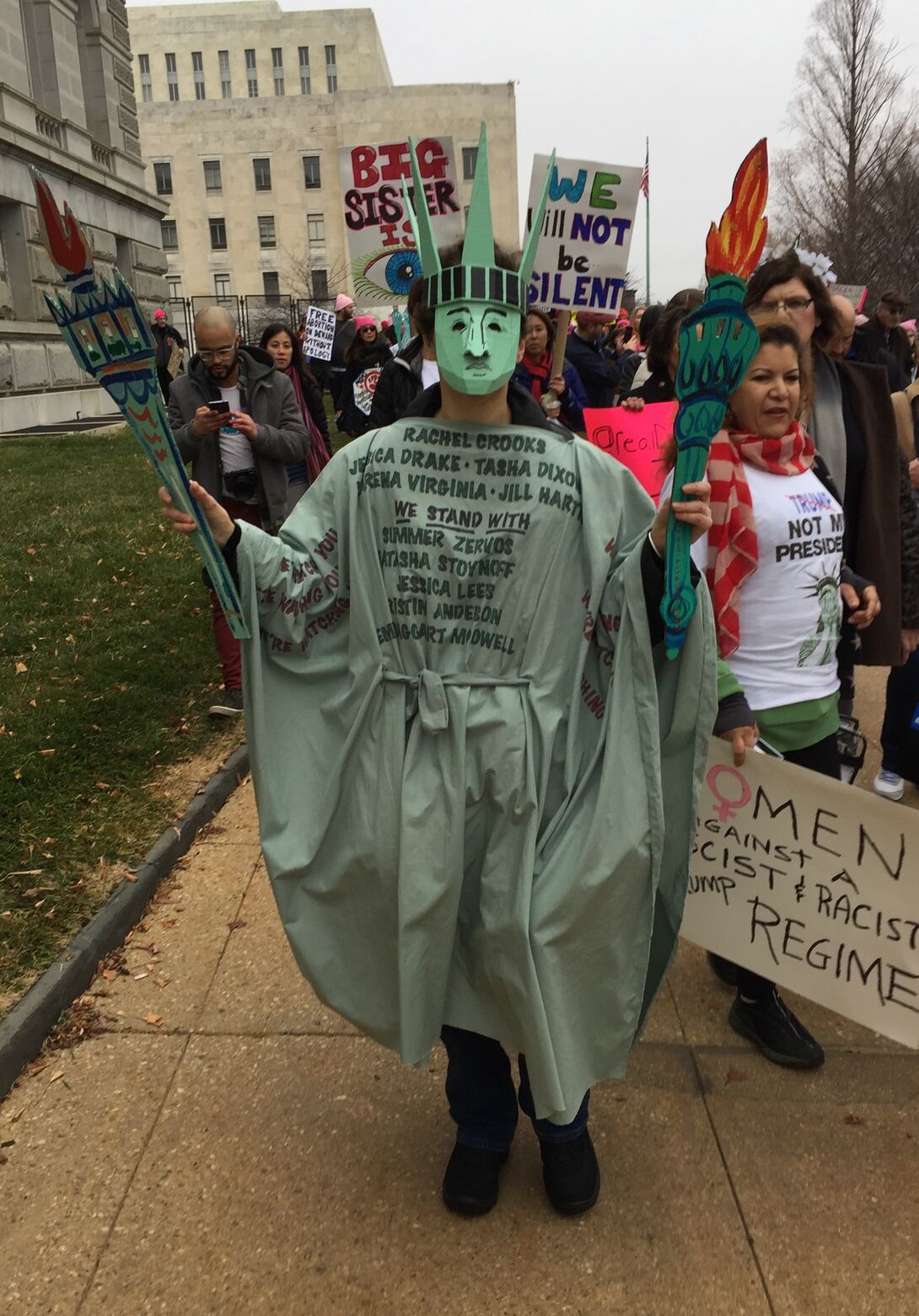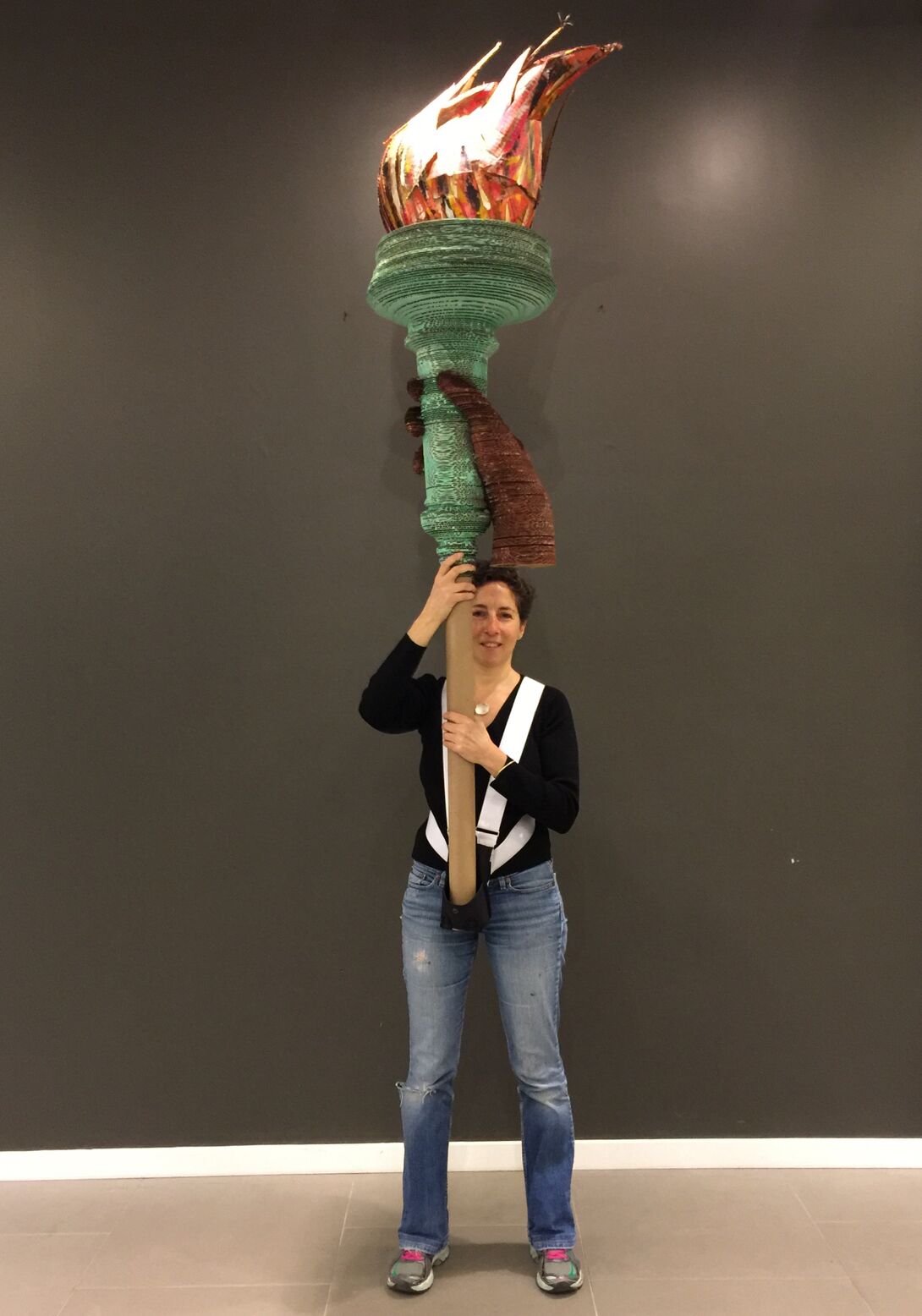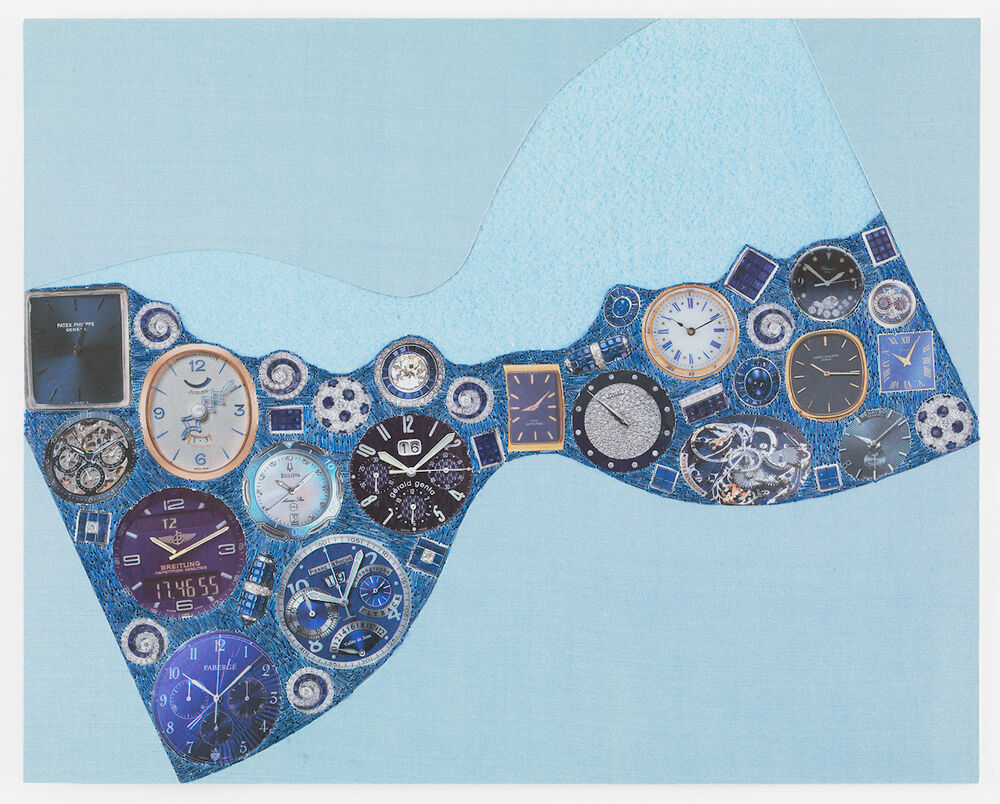
Marching with Time
by Ana Sekler (MA 2016)

Rachel Selekman (MFA 1993) gives voice to women through her artwork and in her daily life. When women’s reproductive rights were under attack in 1986, she attended the March for Women’s Lives in Washington DC. In 2017, when women’s rights were again in danger, Selekman “knew instantly, under these challenging circumstances, that I would go to DC for the Women’s March.”
Shortly after the November US election, Selekman joined We Make America, a group of makers who came together to fight for social justice and accountability in government. The group’s first action was to create a visual statement for the Women’s March in Washington DC and New York City the day after President Trump’s inauguration. With the Statue of Liberty as their inspiration, the group created cardboard torches and crowns, green tunics, and massive banners with “We Make America” written in 12 languages.

Selekman’s version of Lady Liberty included a mask along with a tunic with the names of the women who have accused President Trump of sexual assault written across it. “We are watching you” was written across her arms. Selekman’s solidarity with other women and her focus on women’s issues is present not only in her politics, but in her work as an artist as well.
“Highlighting what women do, their impact and contributions, is critical,” she says. When Selekman came to study in SAIC’s Fiber and Material Studies department, it was her first experience of studying with women faculty like Anne Wilson and Joan Livingstone from the Fiber and Material Studies department, who were a major influence to her creative practice. Selekman is currently halfway through making a series of collages, which she began shortly before turning 50. These small-scale works often feature images of clocks and hourglass forms, addressing larger issues of time, women’s biological clocks, and the physical and emotional challenges that come with aging, issues “that all women face,” she adds.

At a recent SAIC in NY alumni event, Selekman who is active with the SAIC in NY alumni group, spoke in honor of Wilson and Livingstone who inspired and supported her and continue to do so for current students. She was particularly moved by a faculty letter sent to students on the eve of the inauguration pledging their commitment to students and reinforcing the School’s principles of community, diversity and inclusivity, and critical thought. “I was just blown away by the fact that [faculty] expressed such concern and care for the students and that is the model of behavior that we all need to adopt,” she says.
While women’s issues continue to be a focus in her artwork, Selekman is widening the scope of her political action. She is focusing on creating visual statements for Earth Day on April 22, the Climate March on April 29, and the Immigration March on May 6. She says the most critical way to maintain the energy sparked by the Women’s March is for everyone, not just women, to vote in every election, a value her mother instilled in her. “I think that everybody needs to be responsible…to make sure a multitude of voices are part of the conversation,” she adds.
